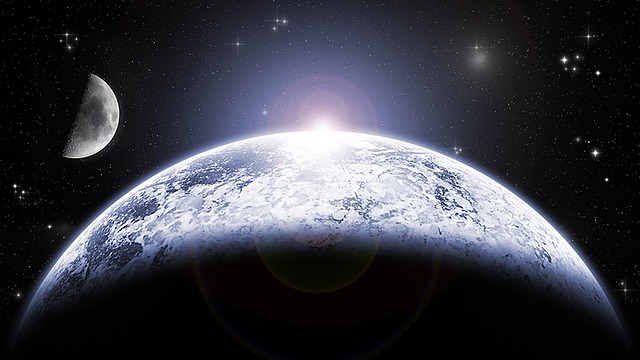
For forty years now, Dr. David Criswell — retired physicist from the University of Houston — has been advocating the use of sunlight on the moon as a source of electricity. In short, he wants the moon to be turned into one giant solar power station (referred to as lunar-based solar power or LSP). And while he has yet to gain the support needed to set things into motion, maybe more people will take his idea more seriously now, especially in light of the world’s energy crisis which can only be solved by a clean and renewable power source.
The main idea is to build solar collectors — stations that would collect sunlight and convert part of that solar power into electricity, which will then be transmitted wirelessly to Earth via microwave beams.
In contrast with Earth-based solar power, LSP will not be constrained by time or weather; it will work 24/7 because in space, the sun is always shining. And because microwave beams can penetrate through clouds with minimal energy loss, receiving stations on Earth will be able to receive the incoming beams regardless of time or weather conditions. This also implies that with a perpetual energy source, there would be no need for storage devices because there would be no need to store collected energy.
According to Dr. Criswell, the moon contains all the materials required to build some kind of LSP system, from solar power collectors to microwave generators and transmission equipment. He estimates that while the project would cost hundreds of billions of dollars, it will be able to generate hundreds of billions of dollars in revenue, and it will mean huge savings for consumers too. Instead of paying about 12 cents per kilowatt hour, the cost would be reduced to 0.001 cents per kilowatt hour.
More importantly, Dr. Criswell’s proposed LSP system would be able to deliver 20 terawatts of energy — an output that is sufficient to satisfy the power requirements of everyone on the planet, and is almost 70 times higher than the projected output of space-based solar powered satellites in geosynchronous orbit.
That won’t be the immediate output, of course. It will start with 0.1 terawatts, then gradually increase to 20 terawatts as more LSP bases are constructed. And even though the cost of building an LSP system can only be afforded by wealthy nations, developing nations can also benefit by constructing their own receiving stations and buying into LSP, instead of building entirely new power plants.
Building an LSP system is no doubt an ambitious project. But we do have the technology to do it, and its potential output does sound monumental. Maybe it’s time to listen to Dr. Criswell. As he told Forbes: “I really think the Moon is our only option for sustainable and affordable electric power on a global scale.”
- Bulenox: Get 45% to 91% OFF ... Use Discount Code: UNO
- Risk Our Money Not Yours | Get 50% to 90% OFF ... Use Discount Code: MMBVBKSM
Disclaimer: This page contains affiliate links. If you choose to make a purchase after clicking a link, we may receive a commission at no additional cost to you. Thank you for your support!


Actually this idea was first proposed in the 1960’s, except the solar cells were to be put on satellites in geosynchronous orbit to enable constant power transmission to one location (per satellite). Among the concerns were potential damage if the targetting failed (i.e the beam wandered) or if things (planes for example) flew through the beam. I don’t know if the idea was ever tested.